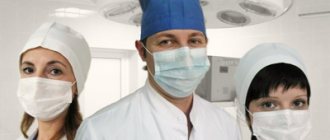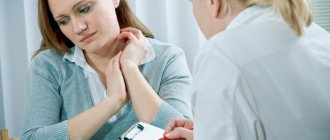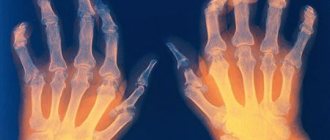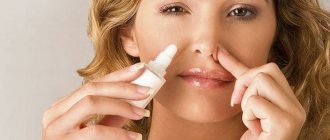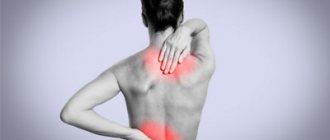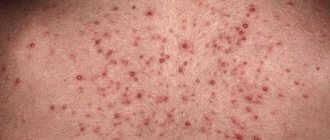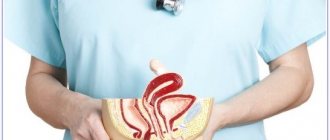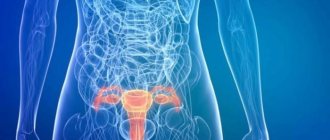Causes of acne
Acne skin pathology is a real scourge of modern man. Why do acne appear? Doctors working with this disease name a huge number of reasons leading to the development of the disease. All factors are usually divided into two large groups: endogenous and exogenous.
Endogenous
Endogenous causes of acne are factors that depend on the body itself. This mainly includes:
- active hormonal changes caused by the growth of the body, and leading to the appearance of acne in both girls and boys;
- variant of the manifestation of premenstrual syndrome in females, regardless of age (in this case, the appearance of acne generally begins to bother a week before menstruation);
- various sudden hormonal surges, such as pregnancy, abortion;
- diseases of the endocrine or reproductive system, such as polycystic ovary syndrome, thyroid pathologies, etc.;
- hyperkeratosis, in which the patient, regardless of gender, experiences thickening of the stratum corneum of the skin;
- various gastrointestinal diseases, among which gastritis and dysbacteriosis are especially common;
- changes in lipid metabolism;
- prolonged exposure to stress, etc.
Exogenous
Exogenous factors are the causes leading to the appearance of acne from the outside. Among them are:
- use of low quality cosmetics for facial skin care;
- exposure to too hot and humid climates;
- prolonged exposure to direct sunlight or other ultraviolet radiation;
- the habit of squeezing out pimples on your own;
- exposure to certain occupational hazards on the body;
- uncontrolled use of certain medications that can affect the condition of the skin;
- addiction to bad habits;
- insufficient or, on the contrary, excessive cleanliness.
Establishing the cause of acne is an important stage that plays a significant role in the further treatment of the patient. Acne, which is treated symptomatically, in most cases only gets worse.
What types of acne are there?
Today, acne is not classified by type. For example, during the premenstrual period, acne in girls is called hormonal. It’s interesting then, how should hormonal acne appear in guys, if in girls it’s during the premenstrual period?!
In my opinion, acne, regardless of classification, provokes the same reasons, and they are treated in the same ways as all others. I divide acne into several types:
- White pimples;
- Purulent acne;
- Subcutaneous acne;
- Rosacea or rosacea;
- Black dots;
Basically, purulent acne and rosacea are provoked by infection and internal problems of the body. White and subcutaneous pimples in many cases are the result of improper functioning of the sebaceous glands. I talked in detail and meaningfully about how to get rid of acne at home in the following article.
Kinds
Acne is a polymorphic disease that can be accompanied by a wide variety of symptoms. To diagnose and select treatment, the following types of acne have been identified:
- ordinary pimple or acne vulgaris , which looks on the face like a black dot or a small bump filled with light contents;
- papules - a type of acne without pus that usually looks like red dots and easily disappears in a few days;
- pustules , often accompanying papules, are filled with pus and affect the entire body, not just the facial area;
- deep acne - a pimple that is not filled with pus, but is located in the deep layers of the skin and responds with pain to touch;
- Cystic acne is a pathology in which large purulent foci are formed, affecting not only the skin of the face, but also other parts of the body.
Causes of acne on the forehead
Reflecting on why acne appears on the forehead, I would like to say that the forehead is part of the T-zone and has seborrheic skin, since the maximum number of sebaceous glands is concentrated in this part of the face. As a result of the active work of the former, a greasy sheen appears on the forehead, which indicates the presence of sebaceous lubricant.
The secretion of the sebaceous glands gets into the pores on the skin and clogs them. Microbes penetrate there, which we plant on our faces with our own hands. Inflammation begins inside the pore and a pimple appears. This can result in dozens of small pimples appearing on the forehead.
In addition, acne can be caused by various pathologies of the pancreas, some parts of the intestines, the gallbladder and various diseases of the stomach. These include:
- dysbacteriosis
- pancreatitis
- gastritis
- cholelithiasis.
If acne begins to appear closer to the scalp, this may indicate a malfunction of the gallbladder. Pimples above the eyebrow line indicate that your intestines are exhausted and have difficulty coping with basic functions. Rashes all over the forehead indicate general intoxication of the body and imbalanced nutrition.
Pimples on the forehead can be caused by excessive consumption of soda, sweet or fatty foods, as well as taking antibacterial and hormonal drugs. The body is not able to remove all toxins and burn excess fats, so they try to exit through the skin.
Symptoms
The symptoms characteristic of acne are well known to many people. Initially, this is a profuse rash that affects the area of the cheeks, forehead, neck, temples, and chin. At the initial stage, it causes only aesthetic discomfort, but as the disease progresses, the following are additionally noted:
- a feeling of itching and burning in the affected area of the skin;
- a distinct increase in local temperature or redness of the skin;
- swelling limited to the affected area;
- pain felt especially intense when pressing on pimples;
- gradual increase in the number of acne.
It is important to remember that acne can appear as a symptom indicating a systemic disease. In this case, additional symptoms can be very diverse.
Stages of acne development
Acne usually occurs in several stages. Highlight:
- damage to only one area of the face, accompanied by the formation of mainly pustules or papules;
- involvement of several facial areas without changing the shape of the rash;
- the development of an active inflammatory process along with all the symptoms characteristic of classical inflammation;
- the growth of acne to a size exceeding 5 mm, which is why pronounced scarring changes remain on the skin after treatment.
Regardless of the cause of acne, it is recommended to begin treatment as early as possible. The ideal option is if therapy is started at stage 1-2 of the disease.
Features of comedones and milia
These types of acne, such as comedones, occur in almost every person - these are black spots on the face. They are formed due to contamination of the pores and are most often present in young girls and boys. The location of comedones is the forehead, nose and chin. The intensity of the rash is different for everyone, it can be single spots, or there are so many of them that the skin begins to become inflamed and red.
These pimples are formed in the duct of the sebaceous glands. Lard itself is white, but when it reacts with oxygen it turns black. Comedones are small in size, but if you start squeezing them out, small dimples will form in their place.
Milia are yellowish-white bumps on the skin, the diameter of which reaches 1-2 mm. They are painless. In another way, such pimples are also called millet pimples. Such rashes appear as a result of improper exfoliation of skin flakes that clog the sebaceous ducts, or millet appears as a result of skin diseases. Mild cases do not require treatment. But for skin diseases, ointments with retinoids or mechanical removal using a scalpel are used.
Which doctor treats acne?
Which doctor helps a person with acne? First of all, it is recommended to consult a dermatologist. It is this specialist who deals with skin diseases, including cases of damage to acne vulgaris or other types of acne. Today, complex acne treatment is widely used. In this case, it is considered important not only to cope with the symptoms, but also to establish and then eliminate the causes of the disease. For complex therapy to be most effective, the dermatologist may involve other specialists in treatment. Consultations with an allergist, endocrinologist, gynecologist, and gastroenterologist are often necessary. Thanks to the involvement of several specialists, it is often possible to achieve good results in treatment.
Types of acne according to severity
When prescribing treatment, doctors also focus on the severity of the skin disease. There are several types of acne depending on the stage of occurrence.
We recommend reading:Large subcutaneous pimples on the chin
- At the initial stage, there are no more than six rashes (usually comedones). Sometimes single inflammations or pustules appear on the face. Treatment can be carried out independently using cosmetic preparations.
- The second degree is characterized by a dozen rashes of various types. They are localized in the face, as well as on the back and shoulders. Such acne is observed in both childhood and adulthood. If it is impossible to cope with the formations on your own within two weeks, then you should consult a doctor.
- When the third degree occurs, multiple rashes of different types, as well as nodes, are observed. They are located on the forehead, chin, cheeks, chest and back. At the same time, the localization area is constantly expanding. Acne leaves scars, congestion and age spots. Treatment is carried out only by a specialist.
- The most difficult and serious is the fourth degree. It is characterized by the formation of pustules and nodes, cysts. Acne covers a wide area of the body. Also, individual elements appear on the buttocks, genitals, and legs. The formations bring severe pain and discomfort. Long and difficult treatment is carried out by a specialist.
Diagnosis of acne disease
Acne is a disease that is rarely difficult to diagnose. However, despite this, the process of making a diagnosis should be treated with utmost attention, since it is this process that often indicates the cause of the development of the disease.
To understand why acne developed, it is recommended:
- careful familiarization of the doctor with the patient’s medical history, detailed questioning about the characteristics of life and symptoms of the disease, clarification of the presence of chronic or acute diseases, which in theory can provoke the appearance of acne;
- conducting general urine and blood tests, as well as biochemical studies, which will help identify the presence of any general signs of abnormalities in the body;
- if endocrinological diseases are suspected, a blood test for hormones is recommended;
- X-ray and ultrasound examinations of organs located in the abdominal cavity are considered necessary;
- for gastrointestinal pathologies, endoscopic examination and FGDS are performed;
- if necessary, CT and MRI are used to identify any abnormalities.
Complete treatment of acne and post-acne is possible only after the doctor has accurately determined the cause of the disease.
Acne treatment
Treating acne is not an easy task and requires an integrated approach. This is most often a long process using many different techniques and procedures.
How to treat acne? Modern acne treatment methods are based on the use of:
- services of beauty salons and complete home care for problem skin of the face and body;
- combination medications intended for external use and drugs capable of systemic effects;
- drugs that will directly affect the pathogenesis of the disease, disrupting its links;
- techniques aimed at stopping chronic processes occurring in the body.
Modern treatment methods involve the active use of medications for external use, including:
- Benzoyl peroxide.
- Azelaic acid.
- Antibiotics for external use.
- Tretinoin and others.
Treatment of acne in women can be carried out using hormonal contraceptives, as they are able to stabilize disrupted hormonal levels. If any chronic disease has been identified that could lead to skin damage, then you should not think about effective treatment of acne without stopping it.
Complexity is the main method to get rid of acne. A set of measures should be selected only by a doctor.
How to get rid of acne
Acne is only an external manifestation of the internal state of the body. Therefore, the advice of doctors is to undergo a comprehensive examination. If internal causes are identified, then appropriate therapy is prescribed. Other types of acne on the face may appear due to skin characteristics or as a result of heredity. They do not require an integrated approach; it is enough to undergo only cosmetic procedures:
- Jessner peeling. A mixture of resorcinol, lactic and salicylic acids is applied to problem skin. After this, the cells begin to exfoliate, and sebum is produced in smaller quantities.
- Fractional thermolysis. The use of a directed laser, which creates microcracks in the upper layer of the dermis, so old cells are destroyed and the production of young and healthy ones begins.
- Salicylic peeling. If you combine it with mechanical facial cleansing, acne, pimples and other types of acne are eliminated. This procedure is suitable for young, oily skin with minor acne. But for mature skin with elements of photo and bioaging, salicylic peeling will come in handy.
- TCA peeling. Trichloroacetic acid is applied to the skin with a special brush. This is how deep cleaning of the outer and inner layers of the dermis is carried out. The skin becomes less oily.
Prevention
Acne is a pathology that is easier to prevent than to cure. To avoid getting sick, it is recommended:
- give up all bad habits and get used to proper nutrition;
- if a person has acne-prone skin, it is necessary to consult a dermatologist on proper skin care;
- you need to follow basic rules of hygiene and skin care;
- it is necessary to avoid exposure to various types of irritants on the skin;
- It is recommended to promptly treat chronic diseases.
Acne is a complex polymorphic disease that is difficult to treat. It is recommended to contact a dermatologist at the first symptoms to prevent its progression.
There are no similar articles.

